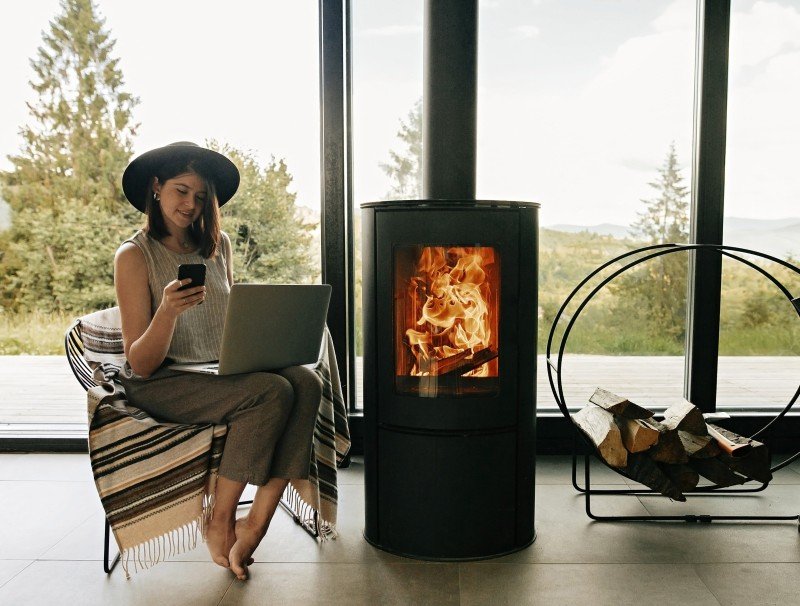
Cheap Fireplace
Add a review FollowOverview
-
Founded Date May 23, 1935
-
Posted Jobs 0
-
Viewed 8
Company Description
The Ultimate Glossary For Terms Related To Best Value Fireplaces
Best Value Fireplaces: An In-Depth Guide
The Buy Wall-Mounted fireplace has actually long been concerned as the heart of a home, offering heat, atmosphere, and a focal point for social events. However, browsing through different options can be frustrating, particularly with budget plan restraints in mind. This article presents a useful guide on the very best value fireplaces, detailing their types, functions, and benefits to assist property owners make a wise choice.
Types of Fireplaces
Fireplaces can be found in a variety of designs and types, each with various qualities, expenses, and advantages. Here’s a detailed appearance at the most common types of fireplaces offered in the market today.

| Kind of Fireplace | Description | Average Cost | Pros | Cons |
|---|---|---|---|---|
| Wood-Burning | Burn logs to produce heat and ambiance. | ₤ 1,500 – ₤ 5,000 | Genuine experience, natural heat | Needs routine maintenance, less efficient |
| Gas Fireplaces | Uses natural gas or propane to produce heat. | ₤ 2,000 – ₤ 5,000 | Easy to use, cleaner than wood | Restricted to gas supply, installation expenses |
| Electric Fireplaces | Mimics flames with LED technology and produces heat through electrical power. | ₤ 200 – ₤ 3,000 | Easy installation, installation flexibility | Less genuine feel, higher operating expense |
| Pellet Stoves | Use compressed wood or biomass pellets, providing an eco-friendly alternative. | ₤ 3,000 – ₤ 4,500 | Efficient, low emissions | Needs electricity to run, requires storage for pellets |
| Ethanol Fireplaces | Burns ethanol fuel, producing flames that don’t need a chimney. | ₤ 300 – ₤ 2,500 | No vents required, portable | Greater fuel expense, security issues |
Factors to Consider When Choosing a Fireplace
Picking the ideal fireplace is not simply about looks; it likewise involves practical factors to consider. Here are essential aspects to remember:
1. Budget
- Determine how much you want to invest. Keep in mind that setup and upkeep costs can build up.
2. Area and Size
- Guarantee the fireplace fits well within the room, thinking about both the space offered and the heating requirements.
3. Fuel Type
- Select the fuel source based upon availability, cost, and the kind of atmosphere you want to attain.
4. Efficiency
- Choose units with high-efficiency rankings to guarantee you are getting the most value for your cash in terms of heat output.
5. Visual Appeal
- Select a design and style that complements existing decoration and enhances the overall appeal of the area.
6. Laws
- Know local guidelines, permits, and building codes that may impact your fireplace installation.
Top Best Value Fireplaces
Based on consumer evaluations, professional opinions, and overall value for money, here are a few of the best value fireplaces currently available in the market:
1. DuraVent Pellet Stove
- Type: Pellet
- Typical Cost: ₤ 2,000
- Emphasizes: Highly efficient with low emissions, making it an outstanding alternative for environmentally-conscious property owners.
2. Napoleon B36NTR-1
- Type: Gas
- Average Cost: ₤ 2,500
- Emphasizes: This fireplace is visually enticing and extremely efficient, with a sleek design and adjustable flame.
3. Duraflame Electric Heater Stove
- Type: Electric
- Average Cost: ₤ 200
- Emphasizes: Affordable and portable, perfect for smaller spaces or adding atmosphere to a room without irreversible installation.
4. Genuine Flame Juliet Gel Fireplace
- Type: Ethanol
- Average Cost: ₤ 300
- Emphasizes: An elegant option for modern spaces that needs no venting, making it flexible and simple to install.
5. Vogelzang VG5790
- Type: Wood-Burning
- Average Cost: ₤ 800
- Highlights: Offers a traditional wood-burning experience with a smooth modern design, perfect for those who cherish the traditional atmosphere.
Regularly Asked Questions (FAQs)
Q1: What is the most economical fireplace alternative?
A1: Electric fireplaces tend to be the most cost-efficient in terms of preliminary purchase price and installation, however can have higher operating expense compared to gas or pellet systems.
Q2: Are gas fireplaces much safer than wood-burning fireplaces?
A2: Yes, gas fireplaces usually produce less emissions and pose a lower threat of chimney fires as they don’t produce creosote like wood-burning systems.
Q3: Can I install a fireplace myself?
A3: While some electric fireplaces permit easy self-installation, other types, particularly gas and wood-burning models, typically require expert setup due to venting and safety issues.
Q4: How do I preserve my fireplace?
A4: Regular maintenance consists of cleaning the chimney (for wood-burning fireplaces), checking for gas leakages (in gas systems), and guaranteeing correct ventilation for electric designs.
Q5: Is an ethanol fireplace a great option?
A5: Ethanol fireplaces are appealing for their modern style and ease of setup. Nevertheless, they can be less efficient and more expensive to run long-lasting compared to other fuel types.
Picking a value fireplace that fulfills your visual preferences and practical needs involves extensive research and consideration. By comprehending various types of fireplaces, their associated expenses, and benefits, house owners can make informed choices that will not just fit their spending plan however also enhance the warm and welcoming atmosphere of their homes. Whether selecting an electric, gas, wood-burning, pellet, or ethanol model, the best fireplace awaits to transform your living space.
